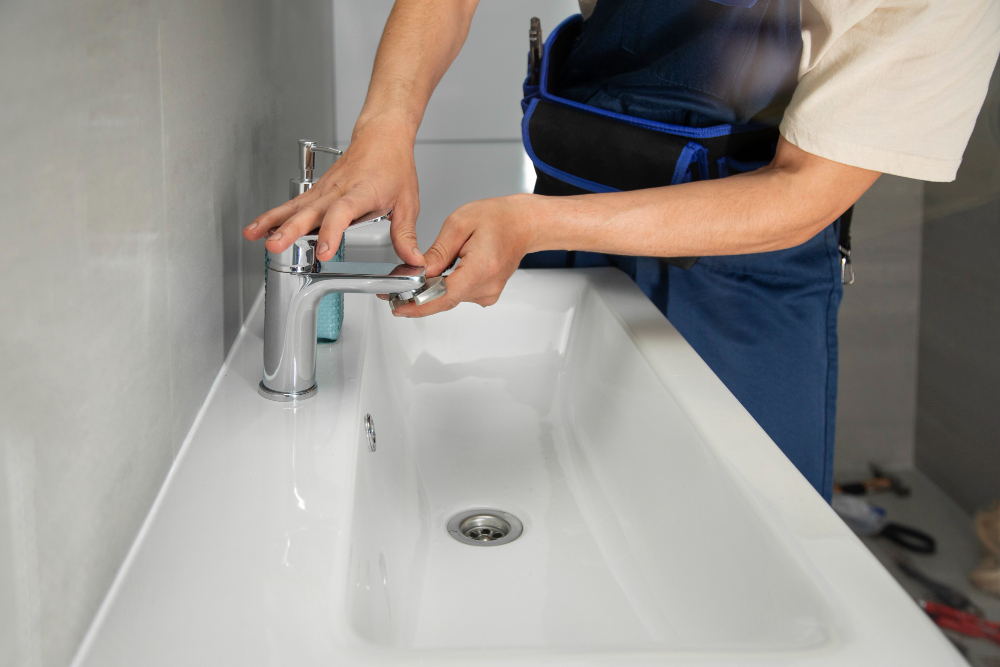A malfunctioning bathroom sink faucet can be a daily frustration, disrupting routine tasks. Drips, leaks, or faulty operations not only waste water but also impact daily activities.
Discovering solutions and learning preventative measures is key to restoring functionality and maintaining a smoothly operating bathroom sink faucet for an uninterrupted daily routine.
Table of Contents
ToggleWhat Tools Are Needed to Install a Bathroom Sink Faucet?
To jumpstart your faucet installation project, be sure to prepare the following tools:
- Pliers
- WD-40
- Bucket
- Flashlight
- Rags/towels
- Silicone caulk
- Basin wrench
- Thread seal tape
- Knife or putty knife
- Phillips and Regular Screwdrivers
- Allen Wrench (not necessary for all installations)
- Plumber’s Putty (not necessary for all installations)
- Adjustable Wrench (or basin wrench for challenging areas)
These tools are standard for faucet installation and repair for optimal ease and efficiency.
Steps to Install a Bathroom Sink with Faucet

These steps provide a comprehensive guide for installing a bathroom sink with a faucet.
However, always follow the specific instructions provided by the manufacturer for the best results.
Step 1: Turn off the Water Supply
Locate the shut-off valves under the sink. Turn off the hot and cold water supply by twisting the valves clockwise.
Step 2: Disconnect the Old Faucet
Use appropriate tools to disconnect the supply lines from the old faucet. Remove the old faucet from the sink.
Step 3: Clean the Sink Area
Thoroughly clean the area where the new faucet will be installed. Ensure the surface is dry and free from debris.
Step 4: Install the New Faucet
Follow the manufacturer’s instructions provided with the new faucet. This may include placing a gasket on the bottom of the faucet.
Insert the faucet into the mounting holes in the sink and secure it in place with nuts.
Step 5: Connect the Supply Lines
Once the faucet is installed, connect the hot and cold water supply lines to the corresponding valves. Use thread seal tape to ensure a tight seal.
Step 6: Check for Leaks
Turn on the water supply. Check for any leaks around the new faucet and supply line connections.
Step 7: Apply Silicone Caulk
Apply a thin bead of silicone caulk around the base of the faucet. This creates a water-tight seal and prevents water from seeping under the faucet.
Step 8: Clean Up
Wipe away any excess caulk and water. Ensure the area is clean and dry.
Common Mistakes to Avoid When Installing a Bathroom Sink Faucet
Here are some tips to avoid common mistakes when installing a bathroom sink faucet:
Follow the Manufacturer’s Instructions
Read and understand the instructions provided by the manufacturer for the specific faucet model.
Gather All Necessary Tools
Ensure you have all the required tools ready before starting the installation process.
Turn Off the Water Supply
Before installation, turn off the water supply to the sink to prevent potential water damage.
Clean the Sink Area
Thoroughly clean the installation area, ensuring a clean and dry surface for the new faucet.
Inspect the Faucet
Check the faucet for any defects or damage before proceeding with the installation.
Secure the Faucet
Follow the manufacturer’s instructions to secure the faucet, ensuring proper alignment and level.
Connect the Supply Lines
Connect the hot and cold water supply lines to the corresponding valves, using thread seal tape for a tight seal.
Check for Leaks
Turn on the water supply and inspect for any leaks around the new faucet and supply line connections.
Apply Silicone Caulk
Apply a thin bead of silicone caulk around the base of the faucet to create a water-tight seal.
Clean Up
Wipe away any excess caulk and water, leaving the area clean and dry.
Key Takeaway
By adhering to the tips and exercising caution during the installation process, you can steer clear of common mistakes and ensure a successful installation of your bathroom sink faucet.
Another tip we can give to experience a hassle-free daily bathroom experience is always choosing the right bathroom faucet manufacturer.
That’s because manufacturing is the first stage in the process.
If the manufacturer fails to deliver quality bathroom products, then the consumer faces the burden of poorly engineered items.


